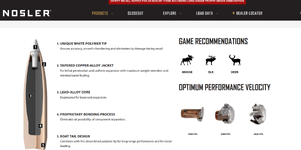In a tikka LA if you can load longer than 3.34 in the magazine then regular 270 with fast twist is ok. Mainly because most of the high bc bullets made for .277 are built for 6.8W with more head height so you MAY run into situation where ogive of bullet is below case mouth if limited to 3.34. I don’t know off hand what the tikka oal limit is but other than that the main difference (if handload) is the 6.8W has a bit more case capacity (74ish vs 67ish grains) from performance standpoint.
As for bullet expansion, velocity does not expand bullets. Impact velocity makes a soft/liquid target “harder” than the bullet (dynamic pressure) such that the bullet deforms until slows down enough during penetration that the bullet is again “harder” than the target and stops deforming. This happens very early during penetration as the bullet slows down quickly once deforms. Energy is what deforms the bullet.
Lou
As for bullet expansion, velocity does not expand bullets. Impact velocity makes a soft/liquid target “harder” than the bullet (dynamic pressure) such that the bullet deforms until slows down enough during penetration that the bullet is again “harder” than the target and stops deforming. This happens very early during penetration as the bullet slows down quickly once deforms. Energy is what deforms the bullet.
Lou

